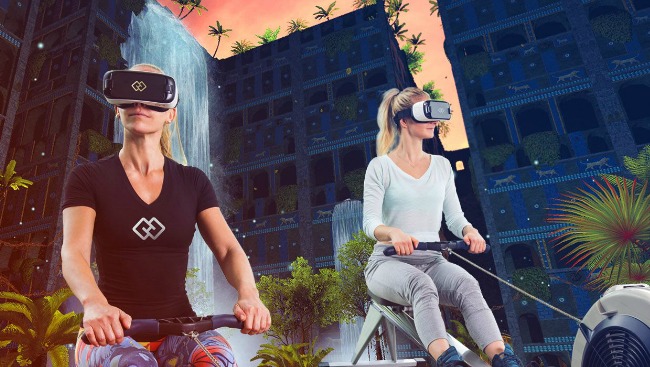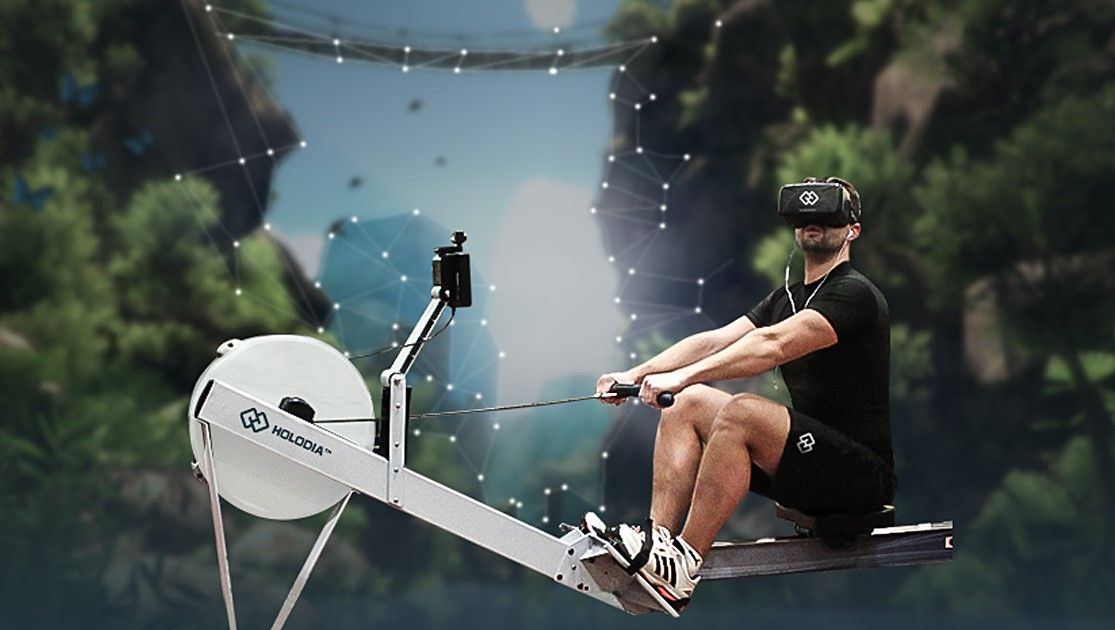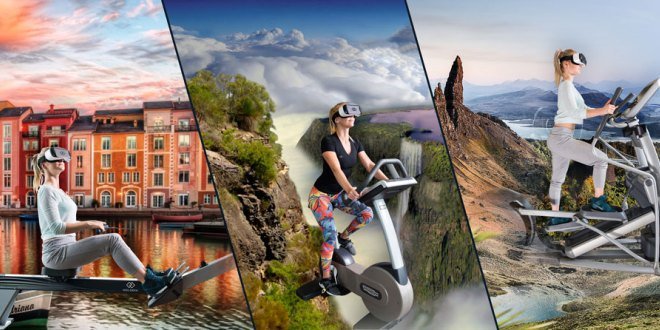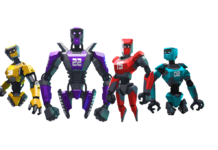The demand for fitness in the world of virtual reality has never been greater. As the niche continues to grow, it’s hard not to take note of the big leaders that are already making significant waves and have been for some time. Holodia, with their Holofit workouts, is exactly the company you have to take notice of when it comes to VR Fitness in 2017. You’ve probably already seen the demos, the images and teaser videos. You may have even tried one of their experiences on just about any cardio machine in several major gyms in many markets. But you probably didn’t know how Holodia came about, how it really works, how important fitness is to the company and it’s founders and where they see the industries of VR and Fitness converging. We had a chance to talk with Bojana Knezevic, Chief Operating Officer of Holodia, about all of this and all things Holodia and Holofit. Her take on the industry and where it’s headed has us excited and we’re sure it will have you ready for your next VR workout as well!
VRFI: While a lot of people are already aware of all the great things that Holodia has done in the VR fitness space, I think that an equal number may still not know everything you’ve done in the segment and how you got there. Please walk us through the history of your company from idea to today.
Bojana Knezevic: The idea itself started as a result of love of VR and the need to democratize Virtual Reality. For us, VR and Fitness was the perfect fit as VR fixes nausea of static fitness.
We have worked very hard on finding the right approach to VR fitness and avoided falling into a trap of making it into a one-off user experience. Finding the right business model was also a challenge, and we have worked our way through to exactly the right market approach as mainly a B2B company, a model we now see being followed by other VR fitness companies.
Lots of hard work and a few years later, we now have clients in the US, Europe and Asia, and excellent feedback that motivates us to push even further.
VRFI: What was it like being a startup in an industry and niche that really hasn’t been explored all that much (VR Fitness)?
BL: Exciting. And challenging. It’s great to be amongst the first ones to create a new industry segment and set the grounds to what we believe will be the future of fitness.
VRFI: How do you decide what features your experiences include? Where does fitness fit in?
BK: Our team is the perfect mix of VR and business professionals, and fitness masters. Our VR and tech ideas are always debated and tested by people that have massive experience in [the] fitness industry, as well as by sports professionals.

VRFI: Are you a fitness company? A tech company? Both? Something else?
BK: HOLOFIT is a software platform that revolutionizes the way we do fitness.
VRFI: I think most people will have already seen a demo of what your company offers, but a lot of people don’t understand the nuances of how effective it is. Please tell us more about how your product works.
BK: We make fitness fun. We help users forget they are working out by immersing them in fantastic VR worlds. We let people travel, dream, play – all while working out. We make virtual experiences and create real fitness results.
HOLOFIT is a plug and play solution that works on major brands of cardio fitness machines.
VRFI: What has been the reception from gym and health club owners? What do they like about it? What is your biggest selling point for them? What objections do they have?
BK: Our customers fall into two categories: Those who know about VR and those that are meeting with it through HOLOFIT for the first time. For some it can be a challenge to grasp the combination of VR and fitness, but that is resolved quickly with testing HOLOFIT.
Our biggest selling point and what they all like the most about HOLOFIT is that it tricks your brain into forgetting the physical strain of workout-and that it is addictive.
The objections, or rather the most frequent questions are the stability of the system and the comfort of users wearing VR headsets. And of course, the still high price of VR hardware.
The first two are confirmed through usage, the latter is a question of industry development and maturity, and is something we are following closely and working on ways of providing adequate but affordable VR hardware solutions.

VRFI: What has been the reception from users? Can you measure performance improvement for rowing or biking without VR vs. with your product? How often do they come back for future workouts?
BK: More that 10.000 users have tried and are using HOLOFIT and the reception has been great. We also received valuable feedback that helped us steer future development and updates to our software in a direction that best fits user needs.
We always suggest to fitness business owners to first introduce HOLOFIT on least used fitness cardio machines and see measurable increase in the machine use. Information gathering and analysis is also a part of our product offer, and we regularly report to our customers on the usage of HOLOFIT in their clubs. The data shows repetitive, increased use of cardio machines – the addictive nature of HOLOFIT.
VRFI: How do you currently deal with hygiene and sweat? Some customers may not want to try for this reason alone. How do you get them past it? What modifications, if any, do you have?
BK: When you do sports, you sweat. That’s a key element of doing sport. No sweat, no sport. That said, hygiene is handled by replacing the headset foam with hydrophobic leather that is cleaned with disposable napkins. You clean the headset like you clean the fitness machine. Nothing new here.
We [have] heard about hygiene as a product killer from the beginning of our work but have never had customer feedback that reported sweat as an issue.
VRFI: What are your future roll out plans?
BK: Expanding. Improving. Perfecting. We have many new features, new HOLOWORLDs and new markets under development. Follow us closely and see how we re-invent fitness.
VRFI: How do you support the equipment? Do you provide the Vive and computer or do you only provide the software and updates?
BK: We want our customers to have a full solution available, and offer our software platform together with the hardware bundle-VR headset and computer.

VRFI: Can you walk us through your partnership with Matrix and Life Fitness? What kind of partner are they, how receptive were they were (or weren’t) when you first spoke with them?
BK: We’ve had very good cooperation with a number of fitness brands, such as Matrix, LifeFitness and Concept2. They all see the possibilities that VR brings to the industry. They have themselves been trying to further [digitize] their own machines and offer their customers more entertainment and motivation.
We have for now decided to be fully hardware agnostic, and that includes not being exclusive to any of the specific fitness brands. Fitness machine compatibility is under constant development and expansion.
On the other hand, we have been approached by the mentioned brands and have worked on partnerships in specific markets. They recognized the increase in sales of their product due to its compatibility with HOLOFIT, and we are working together on further utilizing that synergy.
VRFI: What type of training do individual health clubs require so they know how to operate the devices? Does an attendant help each user start their workout or do users do it themselves?
BK: Ease of use was our goal from the start. Anyone can simply put on a headset and start working out. No additional assistance is needed.
That’s also why we chose to use HOLOFIT with existing cardio machines–everyone knows how to use a bicycle, rower, elliptical machine.
In terms of operating the devices, it is no more complicated than using any piece of hardware, and we provide full support available for any additional assistance the individual customers might need.
VRFI: How do you feel about how Holodia has been received by the VR industry? The fitness industry? The mainstream consumer?
BK: We mostly focused on developing our product and testing it in the market, finding a perfect product-market fit. Not a lot of focus has been given so far to promoting ourselves in fitness or VR industries.
We wanted the consumers to love our product, and now they do. The industry attention comes with it, naturally.
VRFI: Do you workout in VR? Would you recommend it to anyone else?
BK: One of our founders (and I am not going to name names here J ) has turned his life around by using HOLOFIT. From a couch-bug who did not exercise in his life, he now is 20 kilos lighter, self-confident [and] regular HOLOFIT user.
We recommend it to everyone! Especially to people that get bored easily with fitness, that have difficulties finding constant motivation for working out or who need new challenges in their fitness routines. But also to fitness professionals–the features of HOLOFIT can help performance improvement no matter which fitness level you have.

VRFI: Where do you see VR and Fitness going in the next year? 5 years? Beyond?
BK: There will be a time where our VR platform will also allow AR and thus do your workout outside as well. We are already now preparing for that.
Also there will be international fitness competitions. Sort of [a] mix of sport completion and e-games.
We see [the] creation of [a] VR fitness ecosystem as the next big step. All the new digital fitness trends connected in the amazing VR fitness future. And HOLOFIT will be there to lead it.












[…] companies like Holodia, Icaros and VirZOOM, it’s easy to see that VR has embraced gaming that moves well beyond the […]